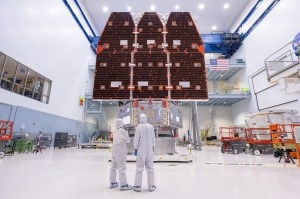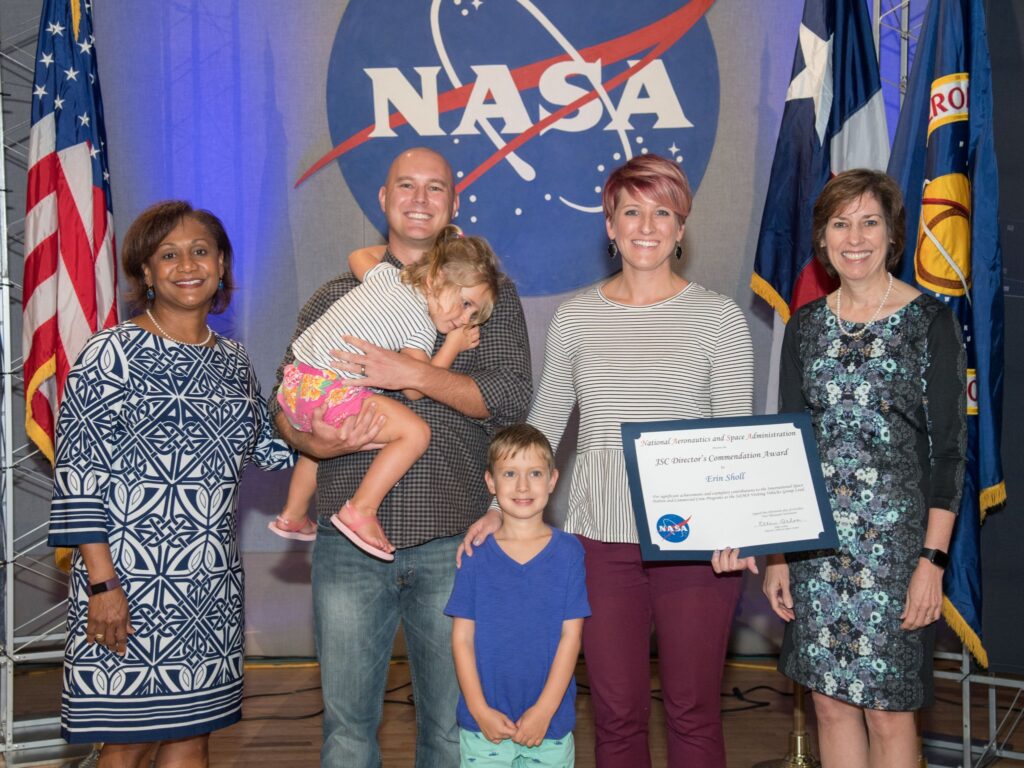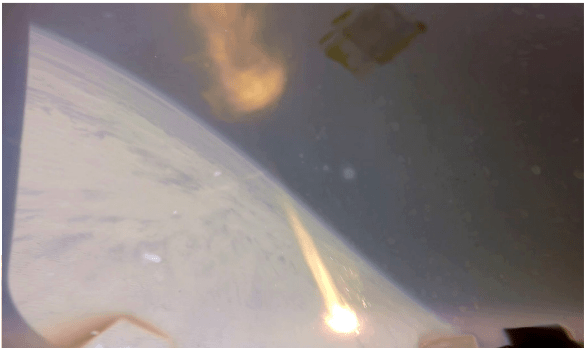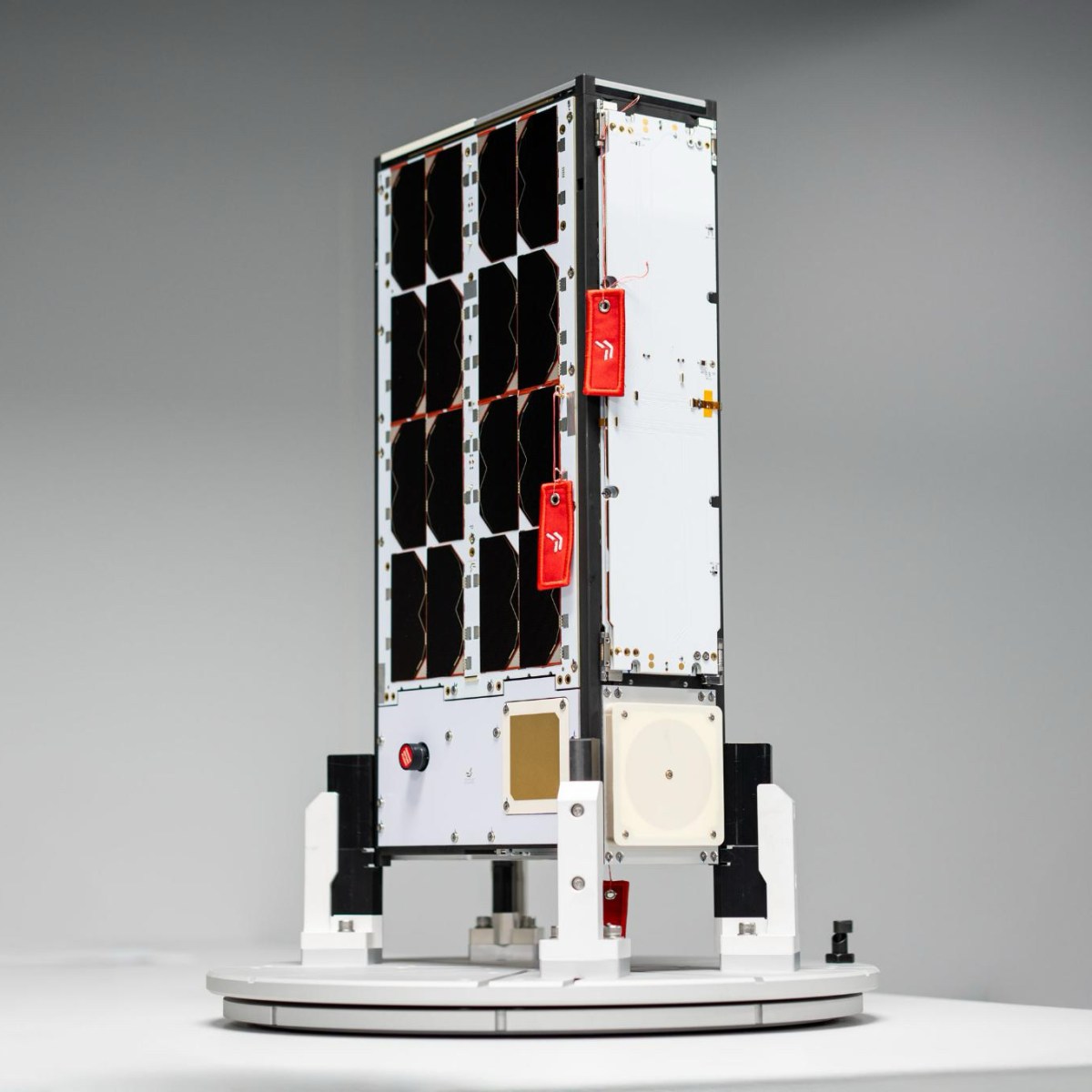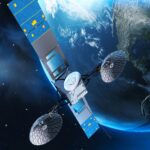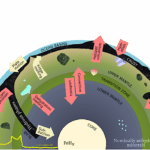Now Reading: Mechanical Systems TDT Support Reaches Across NASA Programs
-
01
Mechanical Systems TDT Support Reaches Across NASA Programs
Mechanical Systems TDT Support Reaches Across NASA Programs

The NESC Mechanical Systems TDT provides broad support across NASA’s mission directorates. We are a diverse group representing a variety of sub-disciplines including bearings, gears, metrology, lubrication and tribology, mechanism design, analysis and testing, fastening systems, valve engineering, actuator engineering, pyrotechnics, mechatronics, and motor controls. In addition to providing technical support, the
TDT owns and maintains NASA-STD-5017, “Design and Development Requirements for Space Mechanisms.”
Mentoring the Next Generation
The NESC Mechanical Systems TDT actively participates in the Structures, Loads & Dynamics, Materials, and Mechanical Systems (SLAMS) Early Career Forum that mentors early-career engineers. The TDT sent three members to this year’s forum at WSTF, where early-career engineers networked with peers and NESC mentors, gave presentations on tasks they worked on at their home centers, and attended splinter sessions where they collaborated with mentors.
New NASA Valve Standard to Reduce Risk and Improve Design and Reliability
Valve issues have been encountered across NASA’s programs and continue to compromise mission performance and increase risk, in many cases because the valve hardware was not qualified in the environment as specified in NASA-STD-5017. To help address these issues, the Mechanical Systems TDT is developing a NASA standard for valves. The TDT assembled a team of subject matter experts from across the Agency representing several disciplines including mechanisms, propulsion, environmental control and life support systems, spacesuits, active thermal control systems, and materials and processes. The team has started their effort by reviewing lessons learned and best practices for valve design and hope to have a draft standard ready by the end of 2025.
Bearing Life Testing for Reaction Wheel Assemblies
The Mechanical Systems TDT just concluded a multiyear bearing life test on 40 motors, each containing a pair of all steel bearings of two different conformities or a pair of hybrid bearings containing silicon nitride balls. The testing confirmed that hybrid bearings outperformed their steel counterparts, and bearings with higher conformity (54%) outperformed bearings with lower conformity (52%). The team is disassembling and inspecting the bearings, and initial results have been surprising. The TDT was able to “recover” some of the bearings that failed during the life test and get them running as well as they did when testing began. Some bearings survived over five billion revolutions and appeared like new when they were disassembled and inspected. These results will be published once analysis is complete.
X-57 Design Assessment
The Mechanical Systems TDT was asked by the Aeronautics Mission Directorate to assess the design of the electric cruise motors installed on X-57. The team responded quickly to meet the Project’s schedule, making an onsite visit and attending numerous technical interchange meetings. After careful review of the design, the TDT identified areas for higher-level consideration and risk assessment and attended follow-on reviews to provide additional comments and advice.
CLARREO Pathfinder Inner Radial Bearing Anomaly
The Climate Absolute Radiance and Refractivity Observatory (CLARREO) Pathfinder was designed to take highly accurate measurements of reflected solar radiation to better-understand Earth’s climate. During payload functional testing, engineers detected a noise as the HySICS pointing system was rotated from its normal storage orientation. Mechanical Systems TDT members reviewed the design and inspection reports after disassembly of the inner bearing unit, noticing contact marks on the bore of the inner ring and the shaft that confirmed that the inner ring of the bearing was moving on the shaft with respect to the outer ring. Lubricant applied to this interface resolved the noise problem and allowed the project to maintain schedule without any additional costs.
JPL Wheel Drive Actuator Extended Life Test Independent Review Team
A consequence of changes to its mission on Mars will require the Perseverance Rover to travel farther than originally planned. Designed to drive 20 km, the rover will now need to drive ~91 km to rendezvous and support Mars sample tube transfer to the Sample Retrieval Lander. The wheel drive actuators with integral brakes had only been life tested to 40 km, so a review was scheduled to discuss an extended life test. The OCE Science Mission Directorate Chief Engineer assembled an independent review team (IRT) that included NESC Mechanical Systems TDT members. This IRT issued findings and guidance that questioned details of the JPL assumptions and plan. Several important recommendations were made that improved the life test plan and led to the identification of brake software issues that were reducing brake life. The life test has achieved 40 km of its 137 km goal and is ongoing. In addition, software updates were sent to the rover to improve brake life.
Orion Crew Module Hydrazine Valve
When an Orion crew module hydrazine valve failed to close, the production team asked the Mechanical Systems TDT for help. A TDT member attended two meetings and then visited the valve manufacturer, where it was determined this valve was a scaled-down version of the 12-inch SLS prevalve that was the subject of a previous NESC assessment and shared similar issues. The Orion Program requested NESC materials and mechanical systems support. The Mechanical Systems TDT member then worked closely with a Lockheed Martin (LM) Fellow for Mechanisms to review all the valve vendor’s detailed drawings and assembly procedures and document any issues. A follow-on meeting was held to brief both the LM and NASA Technical Fellows for Propulsion that a redesign and requalification was recommended. These recommendations have now been elevated to the LM Vice President for Mission Success and the LM Chief Engineer for Orion.
Stay Informed With the Latest & Most Important News
Previous Post
Next Post
-
 012024 in Review: Highlights from NASA in Silicon Valley
012024 in Review: Highlights from NASA in Silicon Valley -
 02Panasonic Leica Summilux DG 15mm f/1.7 ASPH review
02Panasonic Leica Summilux DG 15mm f/1.7 ASPH review -
 03From Polymerization-Enabled Folding and Assembly to Chemical Evolution: Key Processes for Emergence of Functional Polymers in the Origin of Life
03From Polymerization-Enabled Folding and Assembly to Chemical Evolution: Key Processes for Emergence of Functional Polymers in the Origin of Life -
 04How New NASA, India Earth Satellite NISAR Will See Earth
04How New NASA, India Earth Satellite NISAR Will See Earth -
 05And Thus Begins A New Year For Life On Earth
05And Thus Begins A New Year For Life On Earth -
 06Astronomy Activation Ambassadors: A New Era
06Astronomy Activation Ambassadors: A New Era -
07SpaceX launch surge helps set new global launch record in 2024

















